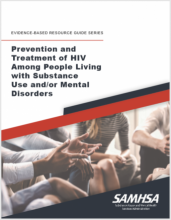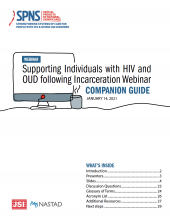
Articles in this supplement focus on the global opioid crisis, including coverage of harm reduction approaches, health justice promotion, and lessons learned.



Articles in this supplement focus on the global opioid crisis, including coverage of harm reduction approaches, health justice promotion, and lessons learned.
Building on last month’s episode about providing HIV and substance use care for people who are incarcerated, this month the Boston Medical Center Team talks with Dr.
This publication describes the recent trends of drug overdose deaths in the United States (U.S.) and the benefits of adopting harm reduction approaches.
In response to an increased risk of overdose, several communities in the U.S. are considering establishing spaces for people to use substances safely.
The COVID-19 pandemic resulted in federal policy changes related to telehealth use that allowed states to maximize access to medications for opioid use disorder (MOUD) through telehealth.
Individuals who have HIV who also use drugs experience increased age-matched morbidity and mortality in comparison with those with HIV who do not use drugs.
This CDC report provides updated data related to HIV prevalence among people who inject drugs, documenting findings that underscore the need for low-barrier access to comprehensive and integrated needs-based syringe service programs for necessary prevention and
This PowerPoint slide deck reviews the foundations of harm reduction philosophy and practice, summarizes drug user health issues and trends, and aims to increase cultural competence and humility when working with people who use drugs.
This month’s Connecting Care episode continues the conversation about barriers to methadone treatment for patients, stigma, and what we can learn from other countries to advance policy and practice for methadone in the US.
This month’s Connecting Care episode discusses the challenges associated with entering and staying in methadone treatment programs and opportunities to improve treatment experiences for all.